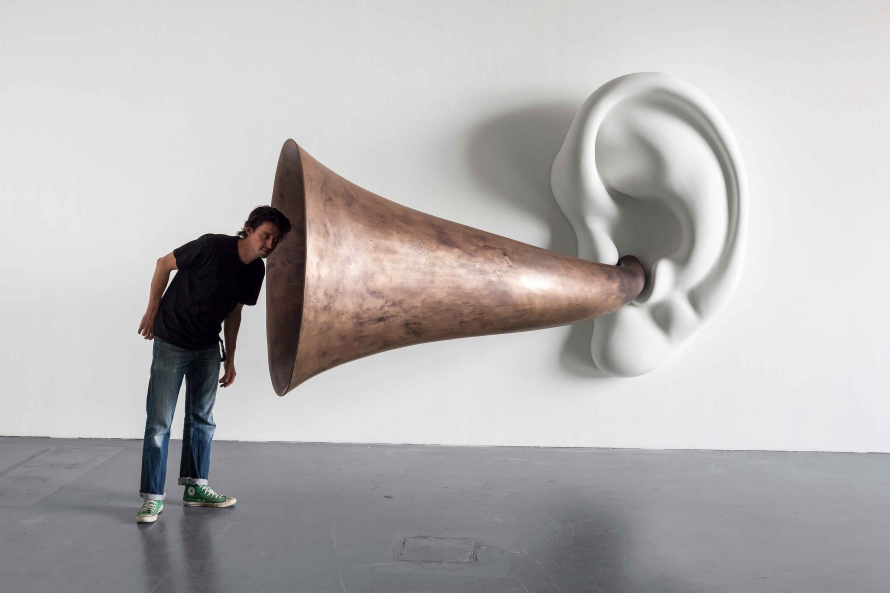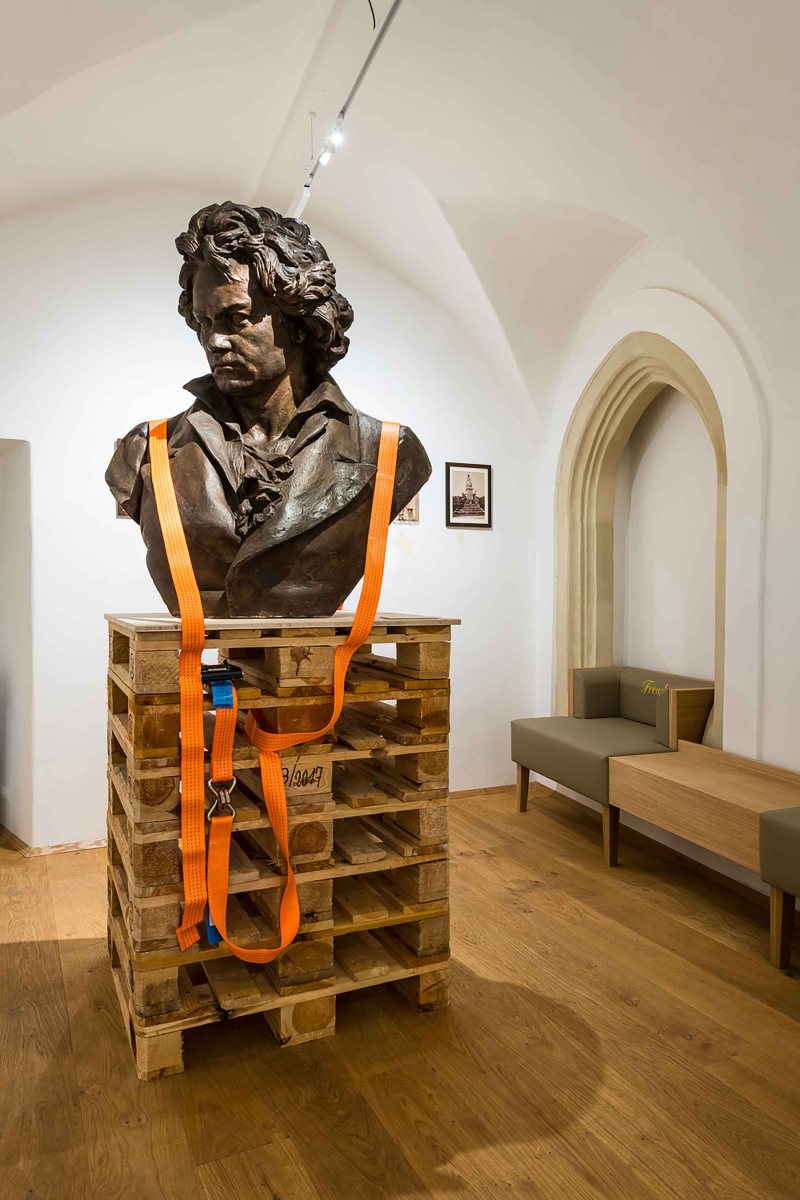
On the opening day of Art Basel Miami Beach, if you think you hear Beethoven on the way into the convention center, you aren't hallucinating. In fact, you should probably grab coffee because Vienna has set up shop for some edible cultural exchange with the return of The Vienna Coffeehouse and The Vienna Lounge. These spaces will be improved this year by Beethoven and commissioned reinterpretations celebrating the composer's 250th birthday. We spoke to Vienna Tourist Board Managing Director Norbert Kettner about how the country plans to play up this particular note of Austrian heritage, how Adolf Loos comes into it and how Austria connects with Miami.
What should visitors expect when coming to The Vienna Coffeehouse and The Vienna Lounge this year? Building off of the tremendous interest in Vienna from fairgoers and participants last year, we’ll be back with some of our most demanded culinary exports: coffee and wine. This season, we add the perfect accompaniment to both: Beethoven’s music. Both traditional recordings of his most popular compositions at The Vienna Coffeehouse, and modern interpretations at The Vienna Lounge, on the occasion of the 250th anniversary of his birthday next year. Renowned classical musicians Aleksey Igudesman and Julian Rachlin have reinterpreted favorite Beethoven compositions, with tracks entitled “Beethoven Takes Five” and “For A Lease.” These tracks and more, alongside original compositions recorded by the Wiener Symphoniker, can be heard at The Vienna Lounge and The Vienna Coffeehouse.
What aspect of the Vienna and Art Basel partnership excites you the most? Vienna has been a partner with Art Basel in Basel for such a long time—it’s exciting to extend this partnership to the U.S.! We’re proud to be able to contribute elements to the fair that enhance the already rich experience. In a deep pool of masterpieces of international contemporary art, Vienna adds music, wine and coffee, all housed in an inviting, minimalist interior. Escaping the winter is a plus too.

How does this collaboration speak to Art Basel enthusiasts? Art Basel goers have evolved along with the fair. Many don’t come for the art alone, they come for the experience. Just like in Vienna where coffeehouse culture would not be the same without the culinary delights, architecture, and our deep appreciation of music (there is often live music in coffeehouses) and the rich cultural history of the city. All elements combine to create a holistic culture of enjoyment. The robust global art market, and the modern world at large, can feel fast-paced and overwhelming. Vienna has a slower rhythm; we are the most livable city in the world.
Can you share more on the installation homage to Adolf Loos? Adolf Loos was born on December 10, 1870, so next year will be the 150th anniversary of his birth. As one of the key figures of Viennese Modernism, he was commissioned to do the interior of Café Museum in 1899, which proved to be a pivotal task for a space he frequented with his first wife—the actress and columnist Lina Loos. His simple furnishing choice of bentwood chairs was in complete contradiction to what was then customary plush furniture. What transpired in design from that point forward was a true revolution in the design of coffee houses. This caused a bit of a scandal at the time for the Café Museum, but artists poured in and named it the place to be. The design made Café Museum an iconic location, and it remains popular to this day. The lamp in The Vienna Lounge was manufactured by Vienna based manufacturer WOKA, who is a specialist in design of the 1900s.
Today you can find Loos’s work in the iconic American Bar in Vienna, which we simply call the “Loos Bar,” or the Loos House on Michaelerplatz square. One of my favorites is Knize, a traditional Viennese men's fashion store on Graben, housed in a shop designed by Loos. Since the 1920s, Knize has often been considered the world's first fashion brand for men.
How do you think that art and culture in Miami and Vienna correlate? We share a rather relaxed and joyful perception of arts and culture, and we both prize the natural landscape and outdoor experiences curated for the public. We’re both well-functioning cities that inspire creativity and preserve unique architectural styles.
Can you explain how the collaboration will honor Beethoven's 250th birthday and how this will be incorporated into the Lounge and Coffeehouse? Interdisciplinary and multimedia art fascinates me, and I admire how different art forms support each other and inspire dialogue. The varied programming in celebration of Beethoven and the major role classical music plays in Vienna are a perfect example. The show at Vienna’s Kunsthistorisches Museum will tell us much about Beethoven through contemporary art installations and the power of silence. Beethoven’s unparalleled energy as an artist, and his tragic fate of losing his ability to hear (which almost made him lose his mind and will to live) is what makes his personality and his life story so fascinating—and so Viennese.
We created a list of classical music events in 2020 for easy navigation: music2020.vienna.info. Another highlight I’d like to mention is the performance of Beethoven’s only opera, “Fidelio.” The opera will be directed by frequent Quentin Tarantino character, Vienna-born actor Christoph Waltz, and performed in Vienna on the stage it first premiered on in 1805. The website also shows some of the most famous “Viennese by Choice” talking about their personal connection to the city, such as Billy Joel, Hans Zimmer, Joshua Bell, Rebekka Bakken and many others.

Classical music has an extensive cultural significance in Vienna. Can you elaborate on everyday participation? In Vienna classical music can be considered pop culture. More than 10,000 people listen to live music every day in Vienna. We welcome many “Viennese by Choice” citizens and visitors, who, just like Beethoven, come from around the world to Vienna to learn and immerse themselves in music, to be a part of the best orchestras, and largely to be inspired. Just like people who want to become actors move to L.A., people from all over the world move to Vienna to become musicians. Next year will be an impressive year in Vienna. Besides the celebration of Beethoven across the city, there will be the opening of ALBERTINA Modern and the re-opening of Sigmund Freud’s Museum.
Tell us about these grand openings? Indeed! The ALBERTINA modern will house over 60,000 works by over 5,000 artists. The Künstlerhaus on Karlsplatz, where it will be housed, was originally built in 1865 at the behest of Emperor Franz Josef, who turned it over to Vienna’s artists as a gift. The museum will present exhibitions of works by important Austrian and international artists including, but not limited to, Andy Warhol, Cindy Sherman, Gerhard Richter, Jonathan Meese, Hubert Scheibl, Jörg Immendorf, Arnulf Rainer, Neo Rauch, Hundertwasser, Annette Messager, Anselm Kiefer, Robert Rauschenberg, Kiki Kogelnik, Elke Krystufek, Roy Lichtenstein, Pierre Soulages, Maria Lassnig, Alex Katz, Sherrie Levine, Karel Appel, Franz West, Erwin Wurm, Georg Baselitz, Sarah Morris, Nam June Paik, Pipilotti Rist, Nan Goldin, and Thomas Ruff, just to name a few.
Following major renovations The Sigmund Freud Museum will allow visitors to mimic the path of Freud’s patients and Freud himself, through his home and offices, the space will also house a dynamic collection of contemporary art, all works inspired by psychoanalysis—and house the largest psychoanalysis library in Europe.
Fairgoers this year will indulge in Viennese wine at the lounge. Can you tell us a bit about the relationship with the different wineries? Viennese wine experienced a resurgence in popularity about ten years ago. We noted how so many Americans fell in love with our natural wines when visiting and since so many are small batch and don’t all export because we drink so much of them, we thought it fitting to bring our wines with us and offer them for free to visitors in the lounge to enjoy. It’s so busy at the fair, sometimes it’s hard to find a beverage. So we decided to provide a few of our favorites.
“Mayer am Pfarrplatz” is one of the most traditional and successful city wineries. We have worked with them before, and on the occasion of Beethoven’s birthday it is the go-to place—as their “Heuriger” (traditional Viennese wine tavern serving local wine and food) is located in one of the buildings where Beethoven once lived, hence they created a special edition of their wine to honor the former tenant. I hope many fairgoers will join me in enjoying that delicious wine, we brought plenty (chuckles)!










 in your life?
in your life?

